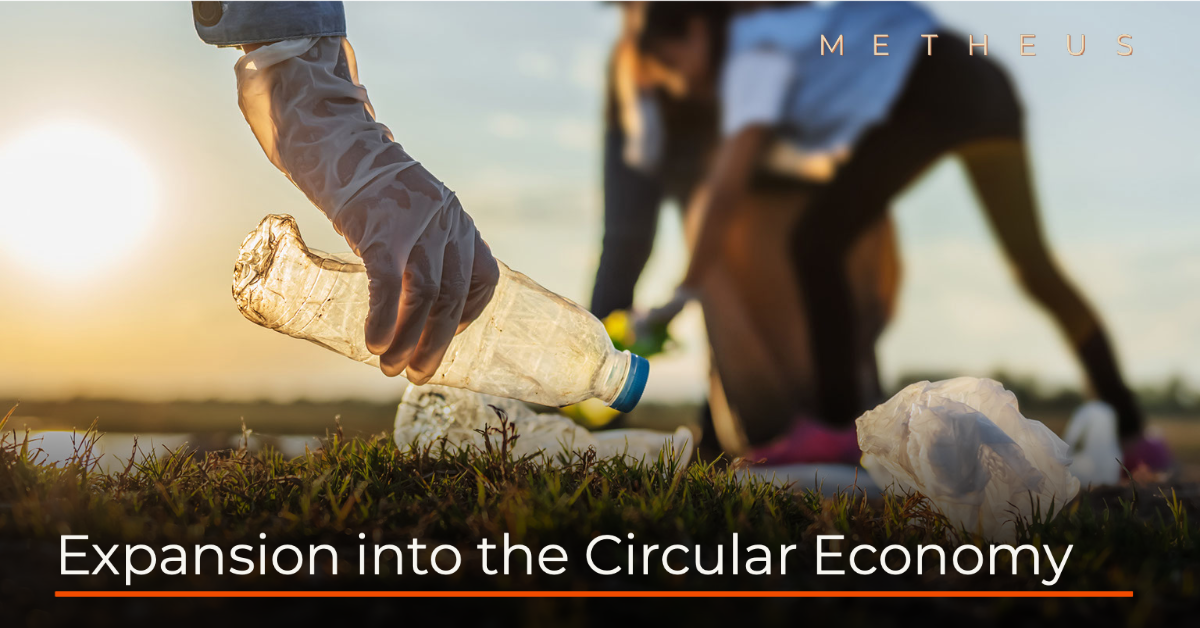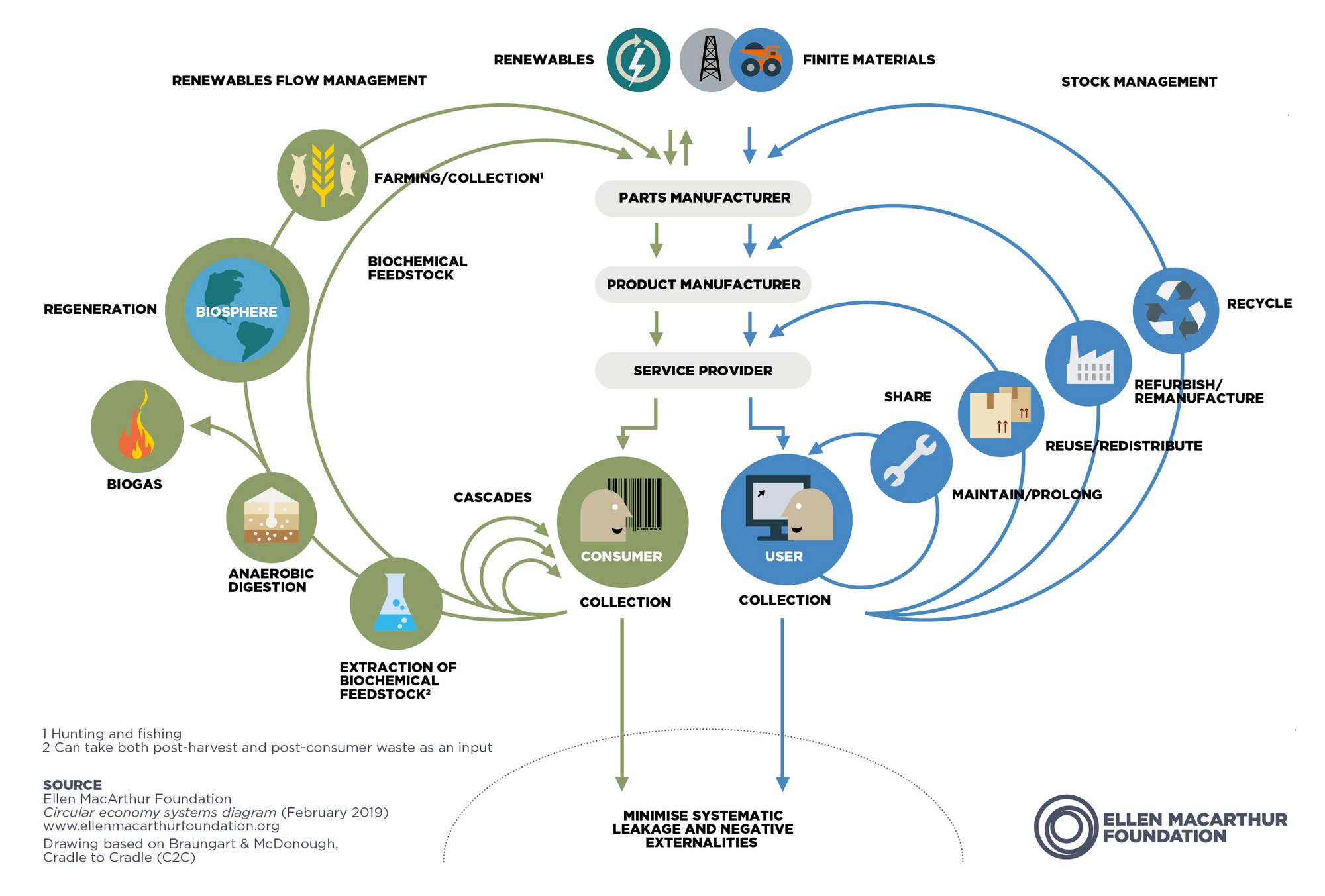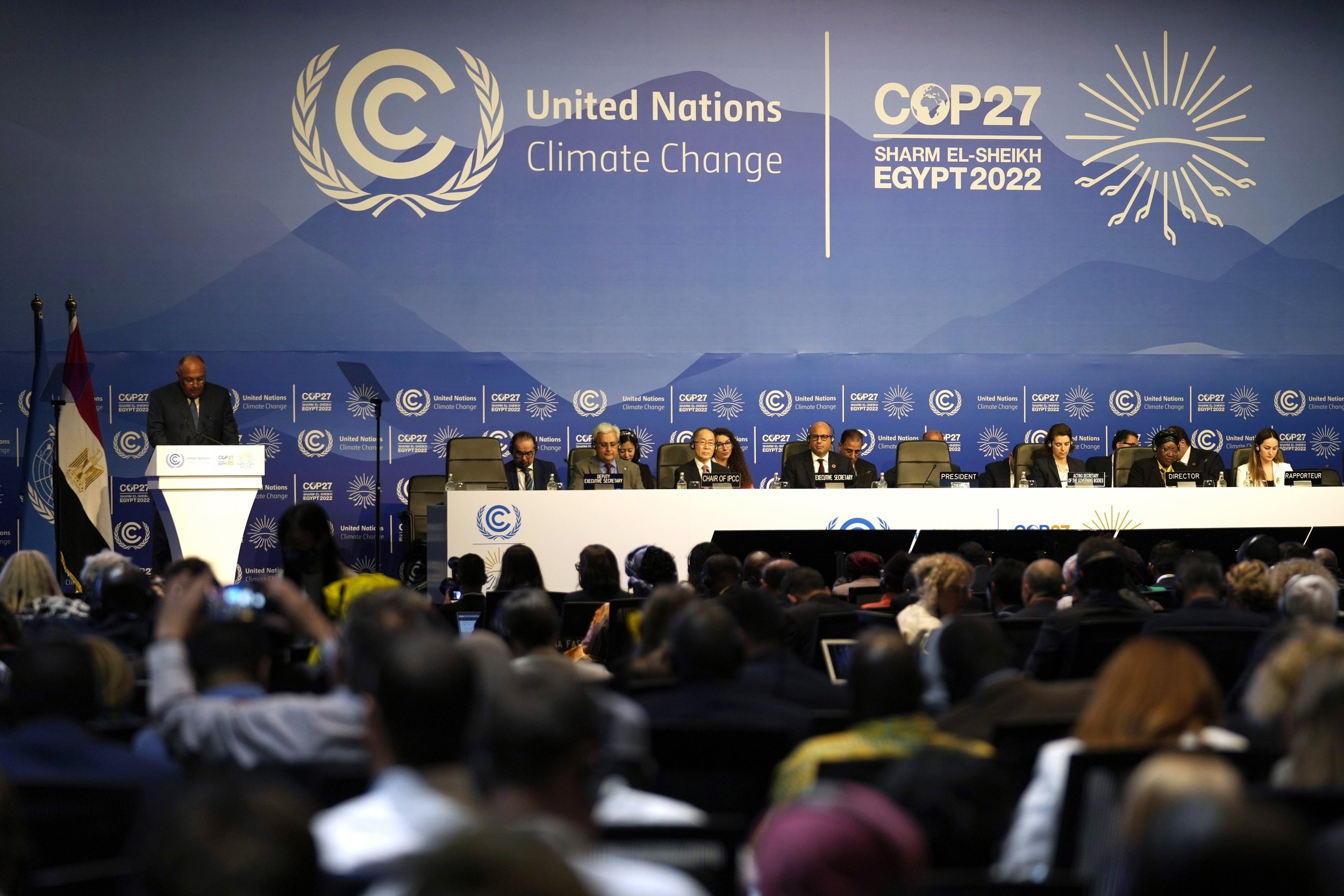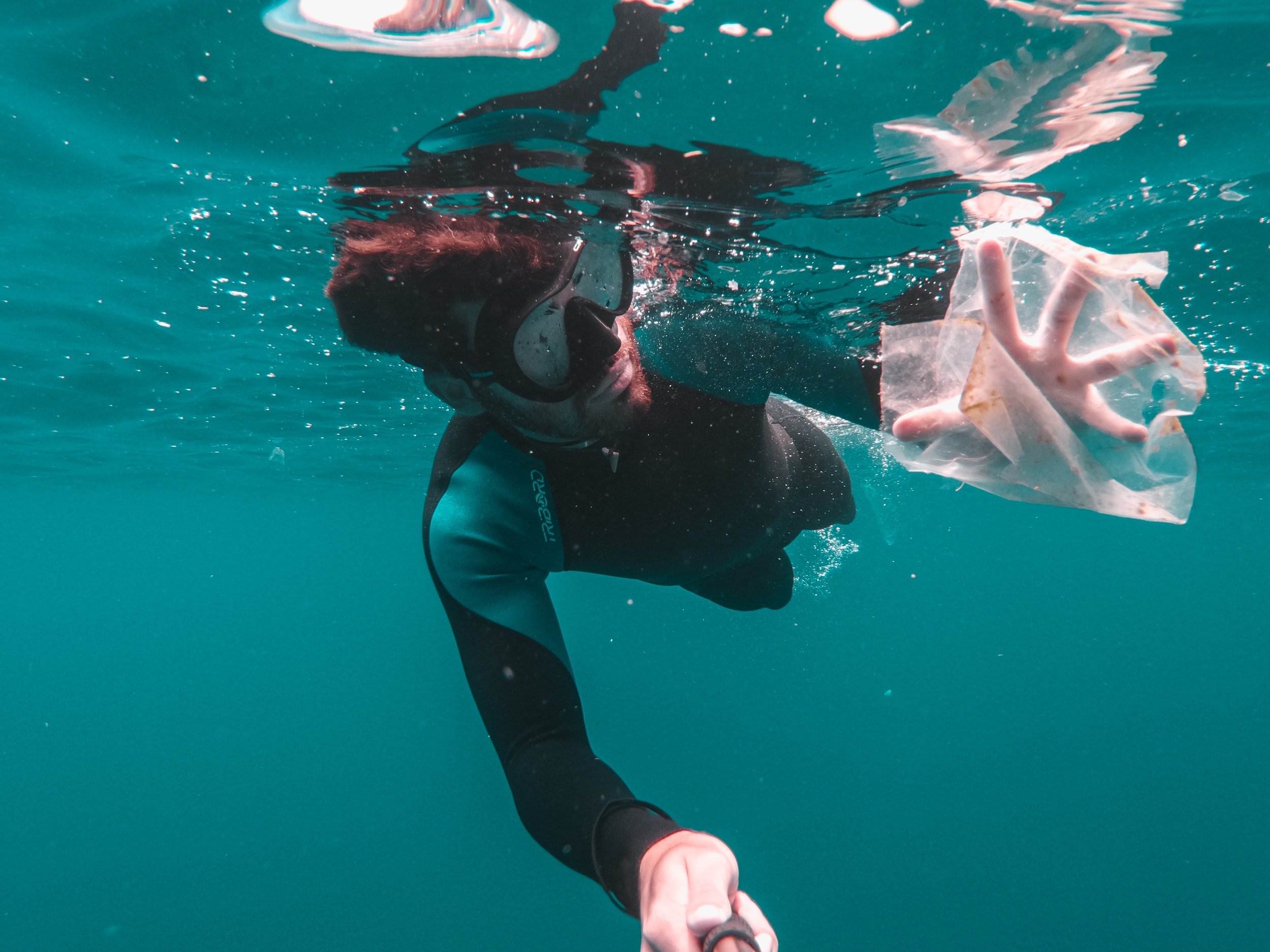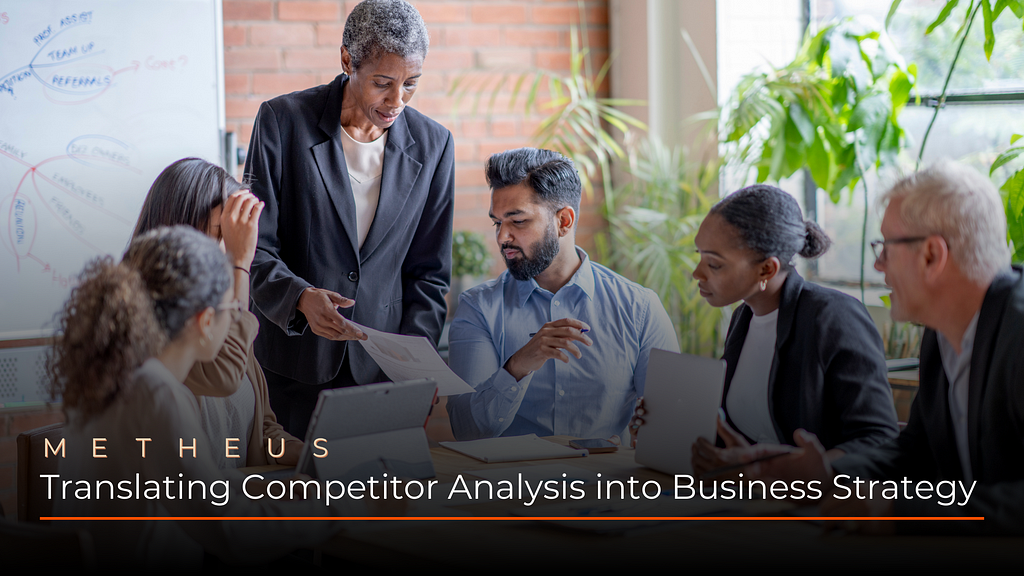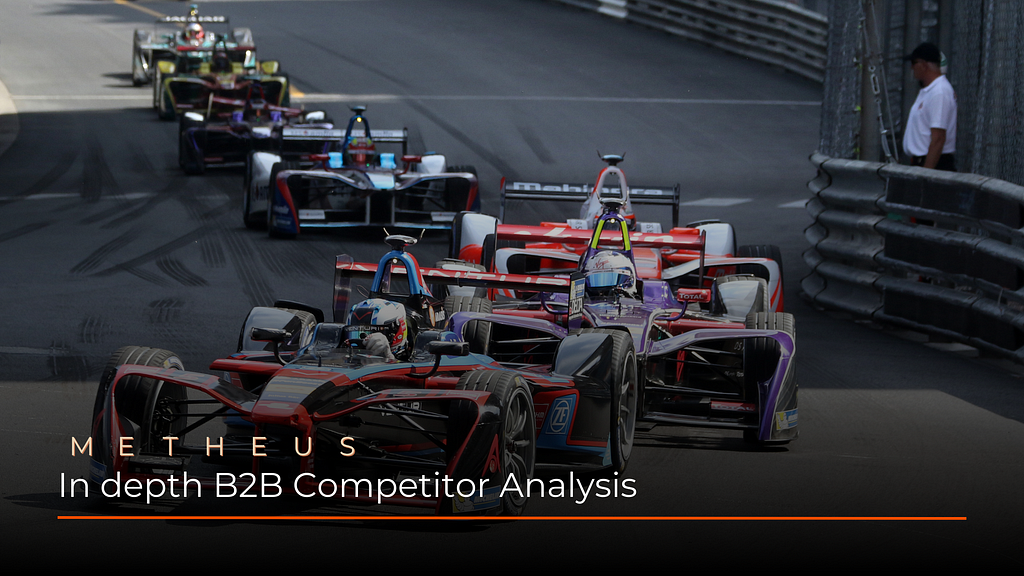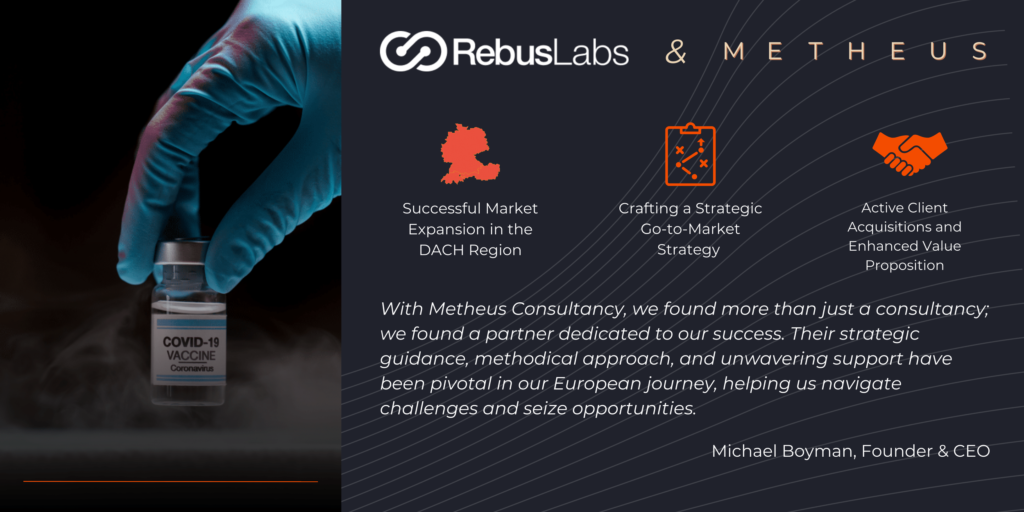Circular Economy
A 2019 study found that oceans had sucked up 90% of the heat gained by the planet between 1971 and 2010. Another found that it absorbed 20 sextillion joules of heat in 2020 – equivalent to two Hiroshima bombs per second. Since the mid-1990s, we’ve lost around 28 trillion tons of ice, with today’s melt rate standing at 1.2 trillion tons a year. To help you put that into perspective, the combined weight of all human-made things is 1.1 trillion tons. That’s about the same weight as all living things on earth.
All of these changes show how severe the negative effect of humans toward the world is. It’s already too late to undo what we’ve done. However, there are things that we can do that could lessen the damage and one way is circular economy.
The circular economy is a concept that promotes the reuse of materials, products and components in order to reduce waste and prevent pollution. The aim is to minimise the use of natural resources and energy, which means that it must be possible for all parts of a product to be recycled or reused at the end of its life. It’s a closed-loop system where waste and resources are reduced, reused, and recycled.
In a traditional linear economy, resources are extracted, manufactured into products, consumed, and then disposed of as waste. However, in a circular economy, the focus is on keeping resources in use for as long as possible, minimising waste, and reducing the need to extract new resources. This is achieved by using the use of closed-loop processes, where waste is transformed into new resources, and products are designed to be reused or recycled at the end of their life.
The circular economy is based on three principles, driven by design:
-
Eliminate waste and pollution
-
Circulate products and materials (at their highest value)
-
Regenerate nature
Eliminate waste & pollution
Eliminating waste and pollution is the first principle of circular economy. The circular economy eliminates waste and pollution by promoting resource efficiency. It operates on a closed-loop basis, keeping resources in use for as long as possible and recovering and regenerating them. By designing products with a closed-loop in mind, waste is prevented and resources are used efficiently. The goal is to create a sustainable and resilient future.
Circulate products and materials (at their highest value)
Circulating goods and materials at their peak value is the circular economy’s second principle. Keeping materials in use means using them either as products or, when that is no longer possible, as components or raw materials. In this way, nothing is wasted and materials and goods retain their inherent value.
There are a number of ways in which products and materials can be kept in circulation and it is helpful to think of two basic cycles – the technical cycle and the biological cycle. In the technical cycle, products are reused, repaired, remanufactured, and recycled. In the biological cycle, biodegradable materials are returned to the earth through processes like composting and anaerobic digestion.
Regenerate nature
Regeneration of nature is the third principle of the circular economy. In a traditional linear economy, the extraction of resources and the generation of waste have significant negative impacts on natural systems and ecosystems. In contrast, the circular economy seeks to minimise its impact on the environment by regenerating and restoring natural systems. This can be achieved by designing products and processes that are based on biological principles and mimic the way that nature works. For example, this can involve the use of renewable materials and the creating closed loop systems where waste is treated as a resource, that leads to the creation of new products and materials. By regenerating nature, the circular economy helps to conserve biodiversity, restore ecosystems, and support the sustainable use of natural resources, ultimately contributing to create a more resilient and sustainable future.
Why Circular Economy is popular?
The concept is gaining momentum in recent years, with many companies adopting it as part of their business models. The main reason is that circular economy reduces waste and conserves resources. This has a positive impact on the environment, as it reduces the demand for new resources and the amount of waste produced.
In addition, many countries have set ambitious targets for reducing their carbon emissions by 2030 or 2050; moving towards a circular economy could help them achieve these goals by reducing landfill waste (which currently accounts for more than 50% of all municipal solid waste) and reducing the demand for raw materials, both of which contribute to greenhouse gas emissions. By closing the loop on resources and ensuring that products are designed with end-of-life considerations in mind, the circular economy has the potential to create a more sustainable and resilient future for all.
In the circular economy, waste is seen as a valuable resource that can be recovered, regenerated, and reused. This shift in thinking requires collaboration across the entire value chain, from product design to manufacturing, use, and end-of-life. Companies, governments, and individuals can all play a role in making the transition to a circular economy. For example, companies can implement closed-loop supply chains, governments can provide incentives for resource-efficient businesses, and individuals can make conscious choices to purchase products made from recycled materials and dispose of waste properly.
The traditional linear model — where we take materials out of the ground and put them back into landfills when they’re no longer useful — has become unsustainable due to rising costs. By reducing waste and conserving resources, businesses can lower their costs and increase their competitiveness, which in turn drives growth and creates new jobs. According to the Ellen MacArthur Foundation, by 2025 about $1 trillion per year of materials cost savings could be generated from circular business models.
Circular economy can help to create jobs and boost economic growth. National economies, entrepreneurs and employees will benefit, as they form new businesses and create new jobs to fill niches created by the circular economy, through resource recovery and remanufacturing. This can help to drive innovation and encourage the development of new technologies and business models that are more sustainable and environmentally friendly.
At the country and regional level, in 2008 China was among the first to adopt a circular economy law promoting the recovery of resources from waste. In that same year, the G8 environment ministers agreed on an action plan for the 3Rs: reduce, reuse and recycle. Following on that, the 2015 G7 Summit Leaders’ Declaration underscored the need for “sustainable supply chains” that protect workers and the environment. Then, in late 2015, the European Union adopted an ambitious Circular Economy Package, including goals for food, water and plastics reuse. By the late 2010s and into the 2020s, ESG emerged. ESG is a framework that helps stakeholders understand how an organization is managing risks and opportunities related to environmental, social, and governance criteria (sometimes called ESG factors). ESG is an acronym for Environmental, Social, and Governance and it takes the holistic view that sustainability extends beyond just environmental issues.
Recent start-ups related with circular economy
In recent years, there has been a growing trend towards sustainable business practices, with an increasing number of startups focusing on the circular economy. These startups are using innovative technologies and business models to create closed-loop systems. These examples serve as inspiration for the business world, showing how companies can thrive while also making a positive impact on the planet. By highlighting the successes of these startups, we can gain a deeper understanding of the opportunities and challenges associated with creating a more circular economy. Some examples of these startups from all around the world include:
-
Apeel is a company that has come up with an innovative way to eliminate single-use shrink wrap plastic packaging on fresh fruit and veg, while at the same time tackling food waste. Apeel mimics nature to increase the shelf life of fresh produce by using the evolved defenses of the plant kingdom. This technique designs out food waste by preventing produce from prematurely rotting and plastic waste – no manmade packaging is needed energy and resource waste – by covering one avocado with Apeel, 23 litres of water and enough energy to charge a smartphone 9 times is saved.
-
thredUP has designed a modern resale experience on one of the largest online platforms for women’s and kids’ apparel. Through its managed marketplace, thredUP has created a smarter and easier way to buy and sell secondhand clothes. Keeping clothes in use for as long as possible is a central strategy of a circular economy for fashion. Analysis on the positive impact of re-commerce on the environment points to benefits across the whole spectrum of resources.
-
Belo Horizonte’s Computer Reconditioning Centre (CRC) is a Brazilian government established electronics remanufacturing facility that reduces electronic waste and tackles youth unemployment. Like many other remanufacturing programmes, it repurposes redundant equipment. But what makes it stand out is its multifaceted approach which benefits the environment and the job prospects of local people. As part of the city’s digital inclusion initiative, the programme connects disadvantaged communities with digital products – it’s a great example of a low-carbon circular economy in action.
-
AMP’s artificial intelligence (AI) platform AMP NeuronTM uses cameras to scan mixed waste streams and identify the different materials. Neuron’s deep learning capability allows for continuous improvement of the identification and categorisation of paper, plastics and metals, by colour, size, shape, brand and other traits. Globally, AMP has estimated that more than USD 200 billion worth of recyclable materials goes unrecovered annually.In one recycling centre in Virginia that installed the technology, the volume of recycled material increased by 10%.
-
Rheaply makes underused resources more visible with its asset exchange manager software. The B2B software opens up sharing opportunities for the global economy, enabling organisations to make the most of tools and equipment that would otherwise remain idle. By surfacing and sharing unused assets between and within businesses and institutions, the value of the items is preserved and there’s also a greater emphasis on maintenance and repair. In turn, there’s less demand to purchase new, often costly items that are only used once or twice in a lifetime.
-
Greyparrot is an analytics platform for the circular economy. Greyparrot leverages computer vision technology to monitor, analyse, and sort tonnes of waste at scale. Poor packaging design and ineffective recycling sorting mean that most of what goes into recycling bins ends up in landfills. Greyparrot is bringing transparency and automation into an inefficient system. Their technology has analysed over 10 billion packaging items in sorting plants to increase recycling rates and introduce accountability to the waste value chain.
Steps taken by enterprises about circular economy
Circular economy principles are being adopted by many of the world’s largest companies, and more and more ‘circular native’ innovators are emerging. Circular economy activities are expanding across almost all industry sectors as a means of generating new revenues, reducing costs and driving innovation. Changes in the regulatory environment and shifting consumer preferences are supporting this trend.
Enterprises are taking steps to ensure that they are prepared for the shift toward a circular economy. In general, These steps include changes in their own way of working mostly with the help of startups. This can be seen in many different industries such as fashion, food, plastics and many more.
The financial sector, for example, is one of many sectors responding to the growing demand for ‘sustainable’ investment strategies. Environmental, social and governance (ESG) issues such as climate change, biodiversity loss, waste and pollution are now key concerns for asset managers, banks and other financial services companies. By the end of June 2021, there were 13 public equity funds focused on the circular economy, with a total of US$8 billion in assets under management, and since 2019, more than 35 corporate and sovereign bonds have been issued to finance circular economy activities.
Blackrock is one of the world’s largest asset manager investing on behalf of clients in assets. In October 2019, BlackRock launched a circular economy public equity fund. The fund aims to drive investments in publicly listed companies already contributing to, or benefiting from, the transition to a circular economy. Examples include Adidas, which has committed to 100% recycled polyester in its trainers by 2024, and Tomra, which provides ‘reverse vending infrastructure’ for the recycling industry. BlackRock’s circular economy fund raised almost USD 1 billion in its first year, from just USD 20 million seed funding in October 2019. As of July 2021, BlackRock’s circular economy fund has grown to more than USD 2 billion assets under management.
What do you need to consider if you are thinking about investing in or transforming your business for the circular economy?
-
Market Opportunity: Evaluate the size of the market and the potential for growth in the circular economy.
-
Business Model: Look for companies with a well-defined business model and a clear path to revenue generation.
-
Team: Assess the expertise, experience and passion of the founding team and their ability to execute their vision.
-
Technology: Consider the company’s technology, how it is differentiated and protected, and the company’s plan to scale.
-
Impact: Assess the potential positive environmental and social impact of the business, and whether it aligns with your investment criteria.
-
Partnerships: Look for companies that have established partnerships with key players in the circular economy ecosystem.
-
Financials: Review the company’s financial projections, past performance and funding history to determine its financial health and potential for growth.
Our project with a refurbished electronics company for circular economy
At Metheus Consultancy, we promote and facilitate the adoption of circular economy practices in the business world. One of our previous projects involved working with a scale-up that was focused on refurbishing electronics. The start-up was a shining example of a circular economy in action,
-
Collecting used smartphones from individuals and telecom companies,
-
Classifying them according to their condition, identifying the necessary maintenance and spare parts,
-
refurbishing the phones to near-new condition by carrying out the necessary repair process,
-
adding warranty for changed parts,
-
and reselling them to electronics stores to be sold as refurbished smartphones.
In doing so, they were creating a closed-loop system in the electronics industry, reducing waste and promoting sustainability.
The client asked us to rebuild two major business units:
-
Supply chain & refurbishing line: Our team started to work on the production line workflow, monitored each step, and identified the bottlenecks. After that, we designed the electronic refurbishing process based on the spare part logistics, inventory and estimated or confirmed order types.
-
Sales channels: Before working with Metheus Consultancy, the client were only selling on specific individual-owned electronics stores. We did a market due diligence process, analyse the market potential, and shopping behaviours of targeted audiences. Based on our results, Metheus Consultancy assisted them to form new partnerships with telecom companies on selling refurbished smartphones, created direct to consumer sales e-commerce sales channel as well as merchant accounts on marketplaces. This helped them to expand their reach, awareness and significant sales revenue.
At Metheus Consultancy, we are strong advocates of circular economy principles and are always looking for ways to support sustainable startups and encourage investment in the field. By reducing waste and promoting efficient use of resources, circular economy can drive innovation, increase competitiveness, and create new opportunities for growth.
If you are interested in sustainability in business or seeking ways to make your business more involved in circular economy, we are here to help. Our team of experts is ready to assist you in finding new ways to create value while also reducing waste and promoting a more sustainable future. Contact us today to learn more about our services and how we can help you embrace the circular economy.


